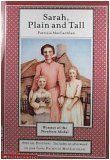
When their father invites a mail-order bride to come live with them in their prairie Kansas home, Caleb and Anna are captivated by their new mother and hope that she will stay.
Materials from United States of America

When their father invites a mail-order bride to come live with them in their prairie Kansas home, Caleb and Anna are captivated by their new mother and hope that she will stay.

It was within the pages of Richard Peck’s Newbery Honor-winning A Long Way from Chicago that Mary Alice and Grandma Dowdel first made their captivating debut. Now they’re back for more astonishing, laugh-out-loud adventures when fifteen-year-old Mary Alice moves in with her spicy grandmother for the year. Expect moonlit schemes, romances both foiled and founded, and a whole parade of fools made to suffer in unusual (and always hilarious) ways.
Wise, exuberant, and slyly heartwarming, Mary Alice’s story is a fully satisfying companion to the celebrated A Long Way from Chicago, which, in addition to receiving the Newbery Honor, was a National Book Award finalist, an ALA Notable Book, and an ALA Best Book for Young Adults.
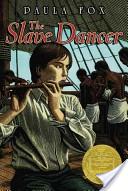
“Take up the pipe, Claudius,” a voice growled near Jessie’s bound head. “He’s worth nothing without his pipe!” Snatched from the docks of New Orleans, thirteen-year-old Jessie is thrown aboard a slave ship where he must play his fife so that captured slaves will “dance,” to keep their muscles strong and their bodies profitable for their owners’ use. Jessie is sickened as he witnesses the horrible practices of the slave trade. But even those horrors can’t compare to the one final event awaiting Jessie’s witness. Can the cruelty to his fellow human beings be stopped? And will it be too late when it finally does stop? In a stunning performance by Peter MacNicol, Paula Fox’s enduring classic comes magnificently alive, with the seating truth about a period of American history we would otherwise most likely wish to forget.
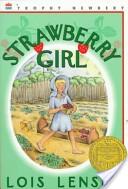
The land was theirs, but so were its hardships
Strawberries — big, ripe, and juicy. Ten-year-old Birdie Boyer can hardly wait to start picking them. But her family has just moved to the Florida backwoods, and they haven’t even begun their planting. “Don’t count your biddies ‘fore they’re hatched, gal young un!” her father tells her.
Making the new farm prosper is not easy. There is heat to suffer through, and droughts, and cold snaps. And, perhaps most worrisome of all for the Boyers, there are rowdy neighbors, just itching to start a feud.

On February 17, 1864, the H.L. Hunley made history as the first submarine to sink a ship in battle. Soldiers on the shore waited patiently after seeing the submarine’s return signal. But after several days, the ship had failed to return. What had gone wrong? In 1995, after over 130 years of searching, the H.L. Hunley was finally found buried off the coast of South Carolina.
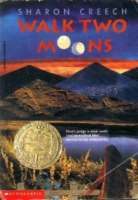
Winner of the 1995 John Newbery Medal. Thirteen-year-old Salamanca Tree Hill, known as Sal, is traveling from Ohio to Idaho with her grandparents, in search of her mother. Along the way, she tells them the story of Phoebe Winterbottom, who received mysterious messages, met a “potential lunatic,” and whose mother disappeared. Beneath Phoebe’s story is Sal’s story and that of her mother, who left one day for Idaho and has not returned. Sal has less than a week to get to Idaho in time for her mother’s birthday and bring her back. Despite her father’s warning that she is fishing in the air, Sal knows this journey is the only chance she has for reuniting her family.
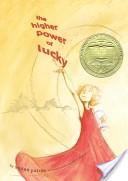
Lucky, age ten, can’t wait another day. The meanness gland in her heart and the crevices full of questions in her brain make running away from Hard Pan, California (population 43), the rock-bottom only choice she has.
It’s all Brigitte’s fault — for wanting to go back to France. Guardians are supposed to stay put and look after girls in their care! Instead Lucky is sure that she’ll be abandoned to some orphanage in Los Angeles where her beloved dog, HMS Beagle, won’t be allowed. She’ll have to lose her friends Miles, who lives on cookies, and Lincoln, future U.S. president (maybe) and member of the International Guild of Knot Tyers. Just as bad, she’ll have to give up eavesdropping on twelve-step anonymous programs where the interesting talk is all about Higher Powers. Lucky needs her own — and quick.
But she hadn’t planned on a dust storm.
Or needing to lug the world’s heaviest survival-kit backpack into the desert.
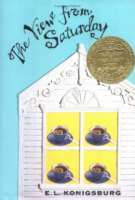
HOW HAD MRS. OLINSKI CHOSEN her sixth-grade Academic Bowl team? She had a number of answers. But were any of them true? How had she really chosen Noah and Nadia and Ethan and Julian? And why did they make such a good team?
It was a surprise to a lot of people when Mrs. Olinski’s team won the sixth-grade Academic Bowl contest at Epiphany Middle School. It was an even bigger surprise when they beat the seventh grade and the eighth grade, too. And when they went on to even greater victories, everyone began to ask: How did it happen?
It happened at least partly because Noah had been the best man (quite by accident) at the wedding of Ethan’s grandmother and Nadia’s grandfather. It happened because Nadia discovered that she could not let a lot of baby turtles die. It happened when Ethan could not let Julian face disaster alone. And it happened because Julian valued something important in himself and saw in the other three something he also valued.
Mrs. Olinski, returning to teaching after having been injured in an automobile accident, found that her Academic Bowl team became her answer to finding confidence and success. What she did not know, at least at first, was that her team knew more than she did the answer to why they had been chosen.
This is a tale about a team, a class, a school, a series of contests and, set in the midst of this, four jewel-like short stories — one for each of the team members — that ask questions and demonstrate surprising answers.
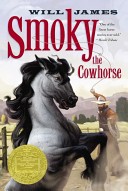
Describes the experiences of Smoky, the mouse-colored horse, from his birth on the range, his capture by humans, through his work in the rodeo and on the ranch, and his eventual old age.